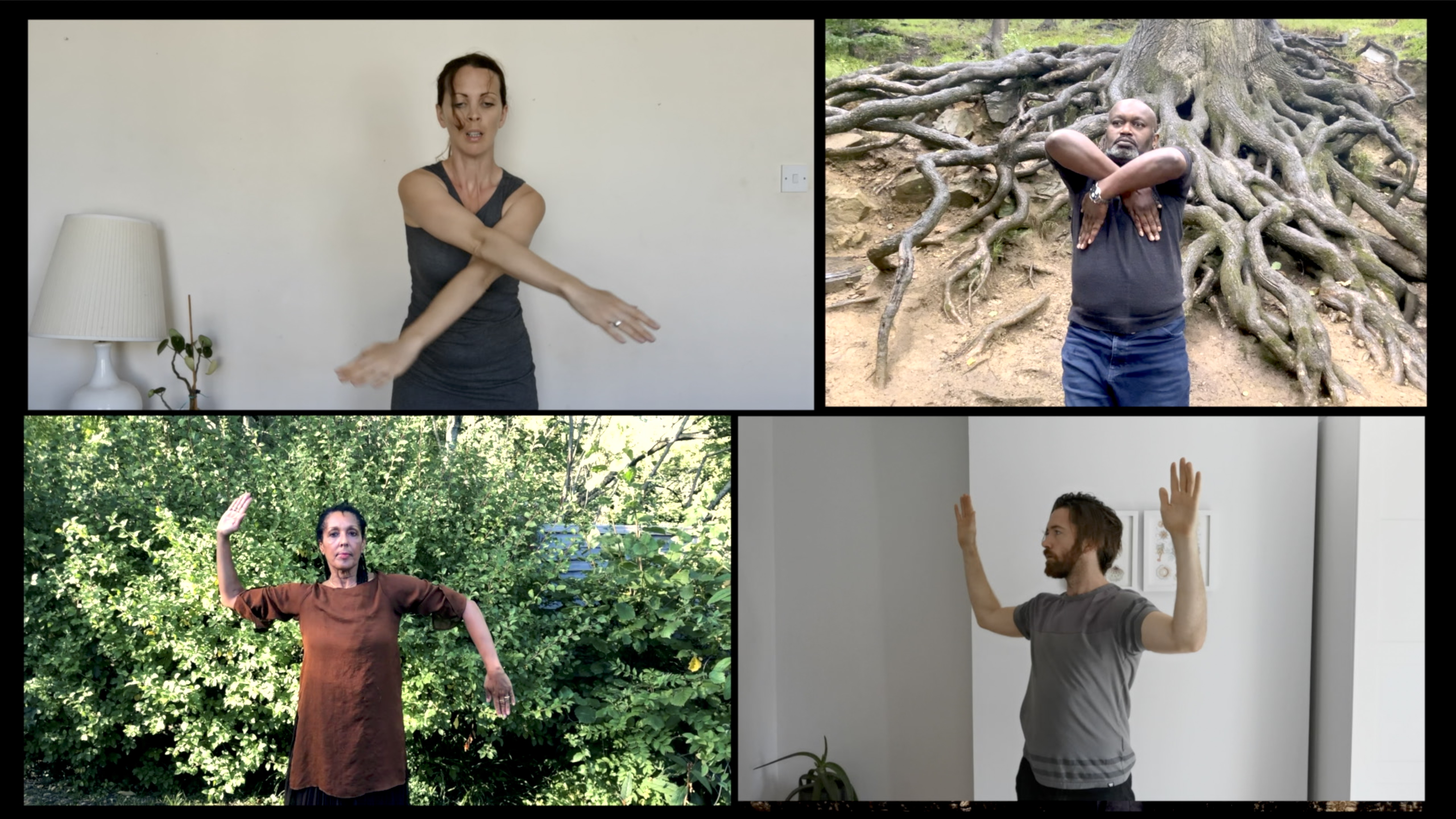Dr Jane Turner discusses the process of creating Gog Magog, a new dance film, and how global events shifted its form and structure.
Date: 14 August 2020
Shapeshift was the working title for this project that aimed to harness the creative potential of the scientific concept Phase Transition. Phase Transitions occur due to a flow of energy or information between interconnected elements creating a dynamic shift, often in response to environmental changes, thus “changing from one defined state to another at a critical juncture” (Johnson 2001), such as water turning to ice – or networked dancers into a performance. In our case, a collection of socially distanced and recorded dance movements were turned into a choreographed dance film.
The Shapeshift title was pertinent as this Arts Council funded project from my dance company, TURNING WORLDS, had to do exactly that, as the lockdown closed all performance venues. Triggered by a commission from Stapleford Arts Centre, with collaborator composer-musician Kevin Flanagan, the nearby Gog Magog downs in South Cambridgeshire took on greater significance. Rich in wildflowers and the song of skylarks and myths of land art portraying a moon goddess beneath its chalk surface, the Gog Magogs became both inspiration and stage as the performance project morphed into a film project with award-winning photographer and film-maker Chris Frazer Smith.
Building our choreography during lockdown meant assembling separate danced 'parts' by isolated dancers, guided by shared simple rules (choreographic instructions) recorded in isolation. Through responding to feedback (from others in the work, and to the environment in which they are able to dance/record their work), still makes possible the building of a cultural organism or group intelligence - a digital performance work through ritualised dance repetitions and new incarnations of identity and expression. Each dancer in the film draws on somatic skills and knowledge and the discipline of many years’ practice as they interpret the choreographic directions.
These directions included the use of medieval runes in interpreting related filmed choreography, and exploring their translation in natural environments that the isolated dancers could singly access. A network of somatic responses from patches of wasteland, gardens, coastlines, via phone camera recordings, folded in with socially distanced dance shot on the downs. This practice articulates collective and artificial intelligence through networked dance making blending the live with the digital and draws on extensive experience working with theories of complexity, emergence and self-organising systems in collaboration with scientists, artists and performance technologies in performance and academic activity.
The 'self-organising' nature of Phase Transitions is key to understanding how a collection of dynamic elements, through repetition and feedback, evolve into new forms; echoing events that we have so vividly experienced in recent months in both Nature, and Culture - a shared virus into a pandemic; a shared human violation into worldwide protest #BlackLivesMatter. The emergent patterns of self-organising systems are unpredictable, non-linear and create new interconnections, intelligence.
The premiere on Zoom also embraced self-organising principles. After an introduction on the journey the film had taken, the link was shared with the audience and collectively we instigated the shared viewing experience across space and time.
One viewer said: “I am someone who always chooses to sit in the highest seats when I go to a dance performance, so such a treat to see the dancers in the landscape - and from above as well as at ground level… and to have both your explanations on your working methods and starting points. Congratulations on such a successful outcome and creative use of the limitations - here’s to the power of art!”
As a new movement of red lighting threatened arts and cultural spaces across the world gathers pace, highlighting the catastrophic losses to individuals and communities in dramatic form, those of us involved in creating ‘the new’ whether in arts or science, university or other environments, can find ways to harness exceptional circumstances in that.
In making this film, I was able to involve a large international community of dance artists in meaningful creative knowledge exchange in ways that I could never have predicted at the project’s beginnings. The new space that opened up offered new possibilities and readings.
Gog means giant, Magog, land. In our dance film project, Gog Magog invites recognition of the deep connections between bodies and the environment, myth and contemporary experience, the live and the digital in our rapidly changing networked global village.

